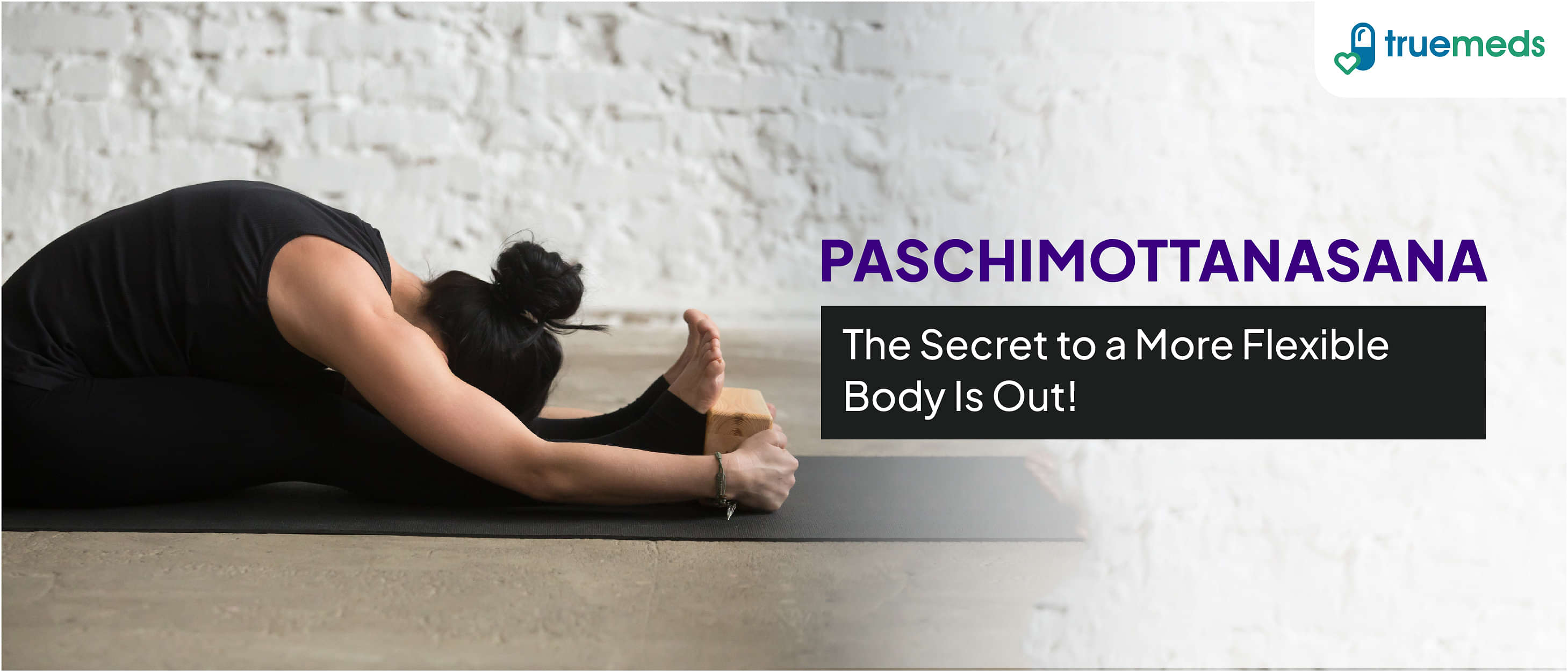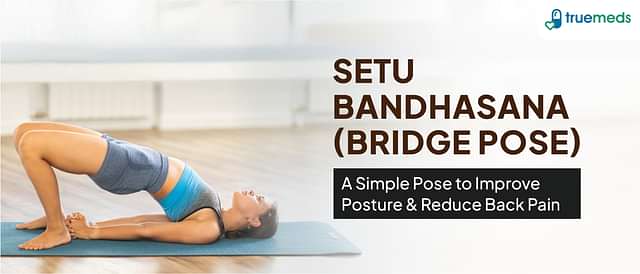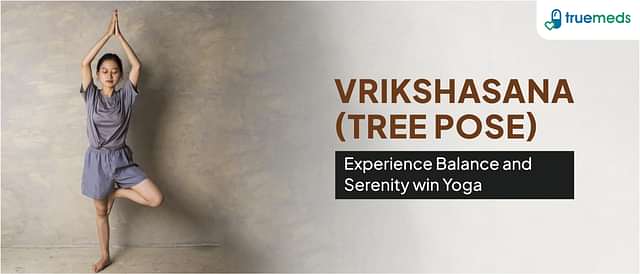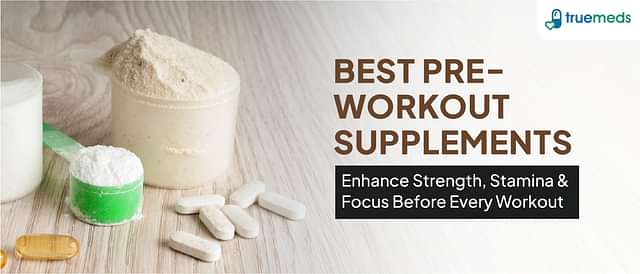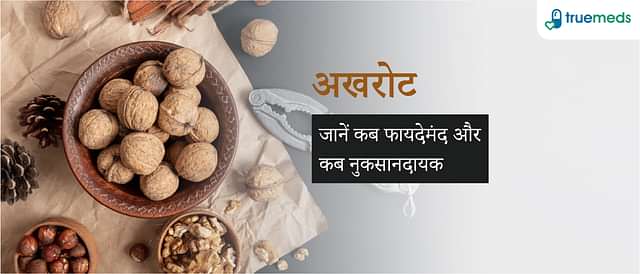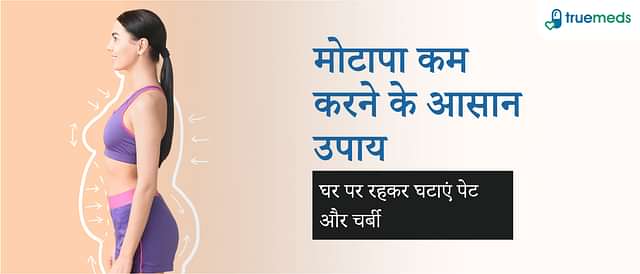Benefits of Paschimottanasana (Seated Forward Bend Pose) and How to Do It
Last updated on : 18 Mar, 2025
Read time : 8 min
What is a Paschimottanasana?
Paschimottanasana, often known as the seated forward bend pose, is an asana that focuses on forward folding. The Sanskrit name is derived from three words: “Paschima,” meaning west or the back of the body; “Uttana,” meaning intense stretch; and “Asana,” meaning pose. This asana involves sitting with legs stretched out and bending forward at the hips, reaching for the toes. It provides a deep stretch to the entire back, targeting the spine, hamstrings, and shoulders. Paschimottanasana is renowned for promoting flexibility, calming the mind, and stimulating the abdominal organs, making it a valuable addition to yoga practices for physical and mental well-being.
Benefits of Paschimottanasana
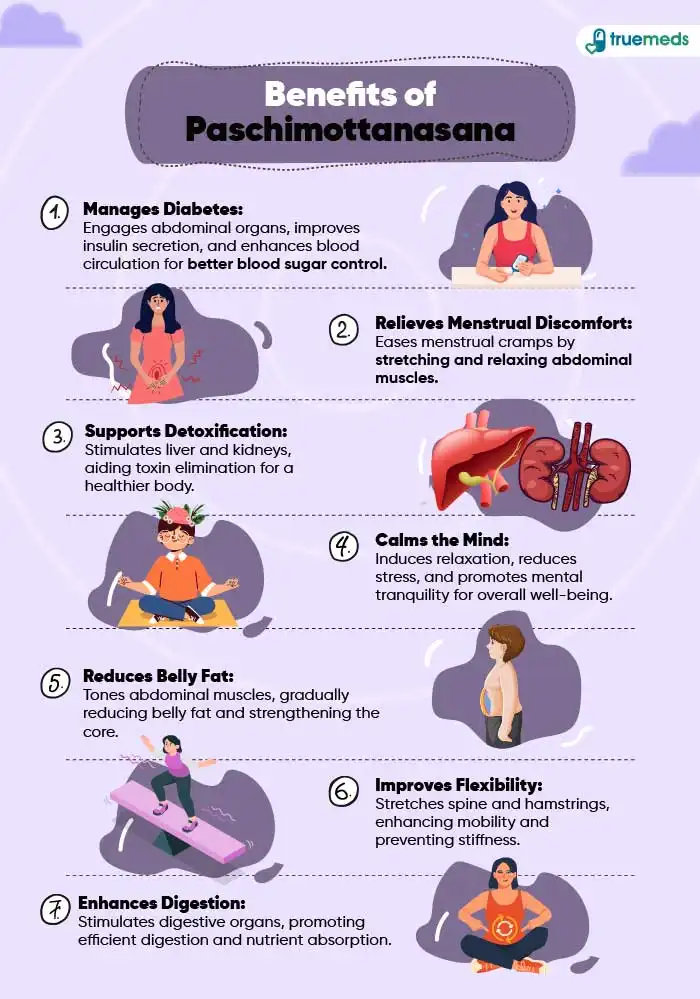
Paschimottanasana offers a range of benefits that contribute to overall well-being. Here’s a detailed look at these paschimottanasana benefits in easy words:
1) Helps in Managing Diabetes
Paschimottanasana, with its forward-bending motion, aids in managing diabetes by actively engaging and stimulating the abdominal organs. This engagement can improve insulin secretion and enhance blood circulation, improving blood sugar control.
2) Relieves Menstrual Discomfort
For women experiencing menstrual discomfort, Paschimottanasana offers relief. The stretching and relaxation of abdominal muscles during this pose can ease menstrual cramps, providing comfort and alleviating the associated discomfort.
3) Stimulates the Liver and Kidneys
Paschimottanasana plays a role in supporting the body’s detoxification processes. By stimulating the liver and kidneys, the pose encourages these vital organs to function optimally, aiding in eliminating toxins from the body.
4) Calms the Mind
The gentle folding motion of Paschimottanasana has a calming effect on the mind. This relaxation helps reduce stress levels and promotes mental tranquillity, contributing to overall well-being.
5) Belly Fat Reduction
Regular practice of Paschimottanasana engages the abdominal muscles, contributing to the toning and strengthening of this area. This can reduce belly fat over time, enhancing both physical appearance and core strength. For more targeted exercises to help reduce belly fat, check out our article on exercise to reduce belly fat.
6) Stretches the Spine and Hamstrings
The asana’s forward bend provides a deep stretch to the spine and hamstrings. This stretching action improves flexibility, prevents stiffness, and enhances the overall mobility of the back and leg muscles.
7) Improves Digestion
Paschimottanasana involves a forward fold that massages and stimulates the digestive organs, involving the stomach and intestines. This stimulation promotes efficient digestion and nutrient absorption, improving digestive health.
What are the Steps of Paschimottanasana?
Let’s get to know the steps of paschimottanasana:
1. Starting Position:
- Sit on yoga mat with both legs stretched out before you.
- Ensure your spine is erect and your toes are flexed toward you.
2. Inhale and Reach Up:
- Inhale and stretch upward by raising both hands straight above your head.
3. Exhale and Forward Bend:
- Exhale, begin bending forward from the hips, moving your chin toward your toes.
- Hold your right wrist before your feet or place your hands on your legs without force.
4. Forward Bend Position:
- Place your head towards the knees or shins, taking long exhalations.
- Stretch your spine forward, reaching toward your legs with your head.
5. Arm Extension:
- Breathe and stretch your arms out before you.
6. Return to Sitting Position:
- Inhale return to the sitting position.
7. Exhale and Release:
- Exhale and release the pose by lowering your arms.
Warm-up Exercises Before Paschimottanasana
Incorporating warm-up exercises can help ease into Paschimottanasana effectively. Here are some preparatory poses and stretches:
Toe and Ankle Stretch:
- Sit comfortably and perform stretching exercises for the toes and ankles.
- Rotate the ankles in both directions to release stiffness in the calves.
Upper Back Twists and Neck Stretches:
- While seated, engage in upper back twists to release shoulder tension.
- Perform neck rotations and turning stretches to relieve stiffness in the neck.
Baddha Konasana (Bound Angle Pose):
- Open the inner thighs and lower back quickly to prepare for Paschimottanasana.
- Sit with your inner feet pressed together in Namaste, attempting to bring the knees closer to the floor for a good stretch in the lower back and inner thighs.
Baddha Konasana Uttanasana (Bound Angle Forward Bend Pose):
- Forward bending removes stiffness around the lower and upper back and shoulders.
- From Bound Angle Pose, raise the upper body and bring it closer to the floor, feeling the stretch along the spine.
Balasana (Child Pose):
- Open the abdominal muscles and neck in preparation for Paschimottanasana.
- Sit on your shins and knees, reach your hands behind to touch the heels, and bring your upper body close to the floor. The neck stretch releases stiffness in the upper shoulders.
Janu Sirsasana (Head to Knee Pose):
- Stretch and open up the calves and lower back.
- While seated, bend one leg and fold it, placing the sole close to the inner thigh. Reach forward to touch the toes and place the forehead on the knee.
These preparatory poses cater to various levels of students, providing flexibility, alignment, and muscle expansion essential for a successful Paschimottanasana procedure.
What are the safety and precautions of Paschimottanasana?
It’s crucial to approach Paschimottanasana with caution to avoid strain or injury. Here are safety tips and precautions for safe practice:
- Warm-Up: Always begin with a proper warm-up activity to prepare your muscles and joints for the forward bend. Gentle stretches and rotations help prevent injuries.
- Flexibility Level: Be mindful of your flexibility level. Avoid forcing your body into the full stretch; progress gradually to prevent overexertion.
- Straight Back: Focus on maintaining a straight back throughout the pose. Avoid rounding your spine, as this can strain the lower back.
- Knee Position: Keep your knees slightly bent if you experience tightness. This helps protect the hamstrings and prevents unnecessary pressure on the knee joints.
- Breathing Awareness: Coordinate your breath with the movement. Inhale while stretching the spine, and exhale while bending forward. Avoid holding your breath.
- Existing Conditions: If you have lower back issues, herniated discs, or sciatica, consult a healthcare professional or yoga instructor before attempting Paschimottanasana.
- Pregnancy: Pregnant individuals should practice this pose cautiously, keeping the bend gentle and avoiding compression of the abdomen.
- High Blood Pressure: Individuals with high blood pressure should approach the pose carefully. It may be advisable to avoid bending too profoundly to prevent a sudden drop in blood pressure.
Risks of Paschimottanasana
While Paschimottanasana offers various benefits, it comes with potential risks if not practised mindfully. Risks include
- Strain on the Lower Back: Incorrect form or overstretching may strain the lower back, leading to discomfort.
- Hamstring Strain: Forceful stretching can strain the hamstrings, causing pain and potential injury.
- Knee Discomfort: Locked knees or intense stretching may lead to knee discomfort, especially for those with existing knee issues.
- Spinal Issues: Individuals with herniated discs or sciatica should be cautious, as excessive forward bending may exacerbate these conditions.
To mitigate risks, practice under supervision, adapt to your body’s limitations, and consult a doctor if needed.
Takeaway
In your journey to holistic well-being, Truemeds is a reliable ally. As you explore yoga practices like Paschimottanasana, remember that Truemeds is committed to providing access to essential health resources. Prioritise your health, practice yoga safely, and consider Truemeds your partner in nurturing a healthier, happier life. Discover a path to wellness with the support of quality healthcare solutions from Truemeds. Your health matters, and Truemeds ensures you access the care you deserve.
Disclaimer
Information in this article is checked for accuracy, but it’s best to talk to a doctor before trying any medicines, supplements or information mentioned here.
Frequently Asked Questions (FAQs)
No, Paschimottanasana is not a lying posture. It is a seated forward bend where you stretch forward with your upper body over your straight legs.
Paschimottanasana is also famous as the Seated Forward Bend Pose.
Paschimottanasana primarily engages and stretches the muscles of the back, hamstrings, and calves.
The starting position of Padahastasana involves standing upright with the feet together and then bending forward to touch the hands to the floor while keeping the legs straight.
References
Cramer, H., Sellin, C., Schumann, D., & Dobos, G. (2018, December 14). Yoga in Arterial Hypertension. Deutsches Arzteblatt International. https://doi.org/10.3238/arztebl.2018.0833
Effect of yogasana practice on systolic time intervals. (1990, January 1). PubMed. https://pubmed.ncbi.nlm.nih.gov/22557686/
Disclaimer
Our healthcare experts have carefully reviewed and compiled the information presented here to ensure accuracy and trustworthiness. It is important to note that this information serves as a general overview of the topic and is for informational purposes only. It is not intended to diagnose, prevent, or cure any health problem. This page does not establish a doctor-patient relationship, nor does it replace the advice or consultation of a registered medical practitioner. We recommend seeking guidance from your registered medical practitioner for any questions or concerns regarding your medical condition.
Popular Articles
Recommended Articles
Recent Articles
Top-Selling Medicines:
...View more
Top-Selling OTC:
...View more
Company
About UsHealth ArticleHealth StoriesDiseases & Health ConditionsAll MedicinesAll BrandsNeed HelpFAQSubscribe
Registered Office Address
Grievance Officer
Download Truemeds

Contact Us
Our customer representative team is available 7 days a week from 9 am - 9 pm.
v3.7.8
Our Payment Partners









